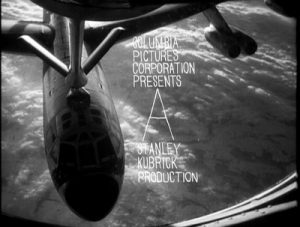Last Thursday, I attended the screening and discussion panel of Hidden Figures at Cornell Cinema. For me, it was an enjoyable feel-good movie about three women who demonstrated their exceptional worth and helped pave the path for others. The movie was based on the stories of Katherine Johnson, Mary Jackson, and Dorothy Vaughan, though I would say that they didn’t feature them equally, with the story of Katherine Johnson having had more focus than the others. Katherine Johnson was portrayed as a prodigious mathematician who had the best numerical sense at NASA, while Mary Jackson was played as a fun-loving character who wanted to go to high school extension classes to become an engineer, and Dorothy Vaughan was a natural leader of the West Computing Group who learned and taught FORTRAN.
The movie itself was funny, but as a student in STEM, I would have appreciated more STEM related jokes because that’s a pretty significant part of these women’s journeys. It was pretty obvious at what points the dialogue was really dumbed down to be more digestible, but I guess I was expecting it to be nerdier. The movie, however, did have its fair share of the black experience in southern Virginia in the 60s. I’m still not clear about the history behind it, but it was strange that the movie showed this group of “colored computers,” but no black men working at NASA.
The staring and the awkwardness still present at the time definitely provided the audience insight to the attitude these women faced in their daily lives. There was one scene with a colored and white water fountains, and I can’t help but think about the other people of color, especially Asians and Hispanics, and their experiences at the time. During most of the movie, I was kind of annoyed with the fact that Katherine Johnson’s story included a love interest, but since that thread was based in fact, which we learned at the end of the movie, I tried to forgive it.
After the film, Professor Kim Weeden led a discussion about women in computer science and the film. What I did not realize was the large disparity in women in CS has been increasing rather than decreasing. Many of the CS students I personally interface with at Cornell have been women, but my own experience as a women in engineering has perhaps made me more inclined to seek out other women in similar fields. Looking at last fall’s enrollment statistics, CS ’18 majors in engineering is about 28% female, which doesn’t seem very high, but is higher than the national average. While this can be attributed to many things including the culture of Silicon Valley, one thing that I know shapes many prospective students choice to not pursue CS is the lack of background going into college. People enter top CS programs with a few years of programming experience already under their belts and have a couple years of summer internships because they were encouraged at a much younger age to study CS. This makes entering the major much more intimidating for those with absolutely no coding experience. In my opinion, the gender disparity in CS is largely attributed to how younger children are exposed to the notion that for some reason, being a computer nerd is typically male and uncool, and that creating a positive experience earlier on for more people, especially girls, can help tighten the gap.
During the discussion, one person brought up their disappointment in the white saviorism of the film, to which I have a differing opinion on. African Americans have fought hard for their representation in Hollywood and the media, but have largely forgotten about other people of color to the extent that they complain about things that aren’t just added to reinforce the white narrative. The truth is, things don’t magically change because of minorities’ hard work. In real life, there kind of has to be someone in power that gives you the chance to succeed. Yes, white men helped put them in a position to succeed, but without their own hard work and intellect, they would not have. So while others complain about this representation of minority success, I find it hard to overlook the fact that there are still minority groups who have unproportional and trite stereotypical media representation while the movie was clearly the positive retelling of actual people’s lives. This was a feel-good movie for a general audience and I definitely had a good time watching it.


